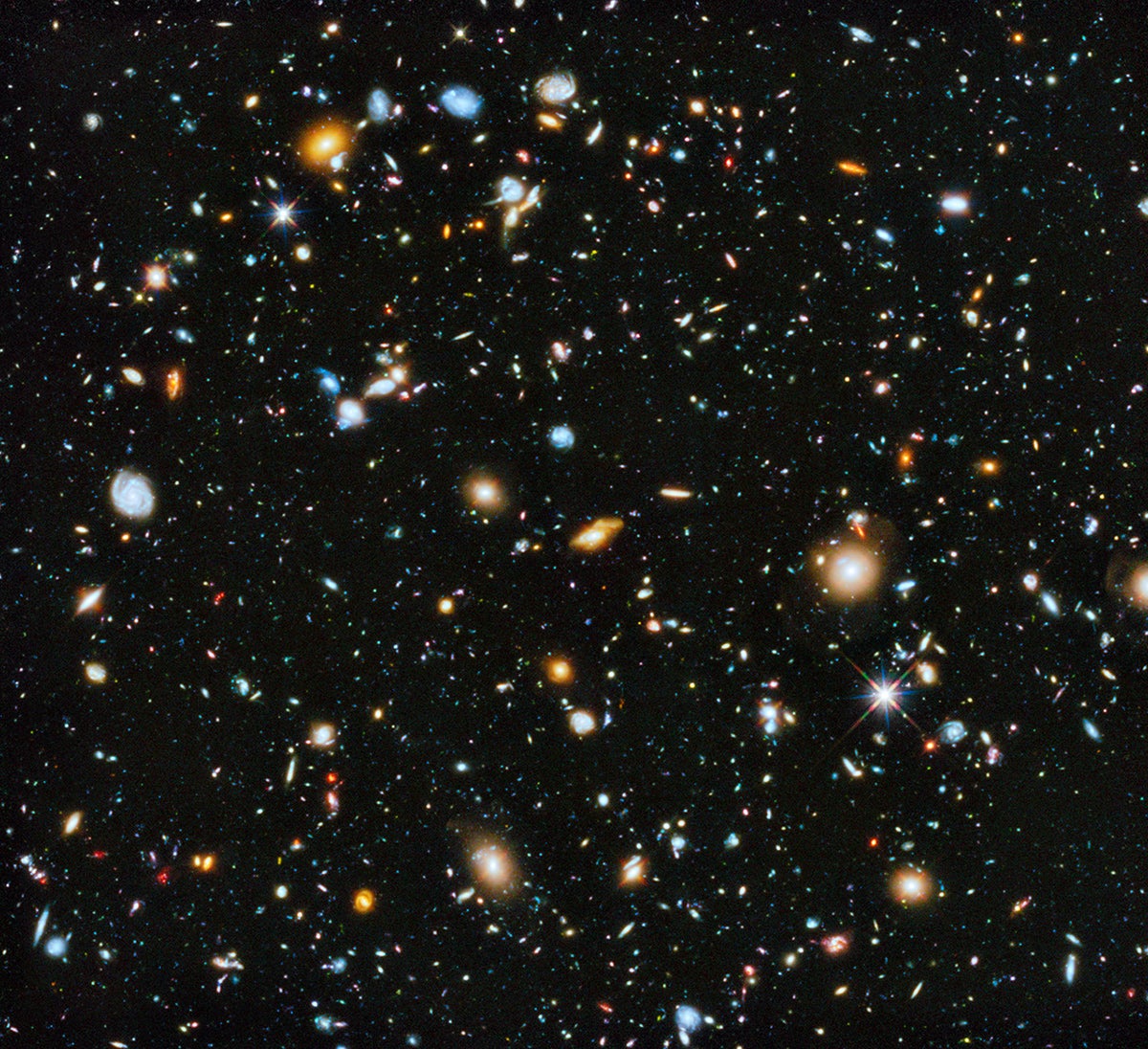Amazing new Hubble image is the 'most comprehensive' picture of our Universe to date
Click the picture above for a more detailed view. The image is a composite of several different wavelengths showing 10,000 galaxies and billions of stars

Astronomers have released an extraordinary new image captured by the Hubble Space Telescope that shows “the most comprehensive picture ever assembled of the evolving universe.”
The spectacular view is the result of the Hubble Ultra Deep Field (HUDF) survey, a project that points the Hubble telescope at a relatively empty corner of space and stares into it for a long period of time, collecting light from stars and galaxies billions of light-years away.
What’s new about this particular image is that it not only captures infrared and visible light, but also near-ultraviolet – a part of the spectrum issued from the hottest, largest and youngest stars that has not previously been included in HUDF captures.
"The lack of information from ultraviolet light made studying galaxies in the HUDF like trying to understand the history of families without knowing about the grade-school children," said principal investigator Harry Teplitz. “The addition of the ultraviolet fills in this missing range.”
The patch of sky in the image has previously been studied in both visible and near-infrared images from 2004 to 2009. Now, with the addition of ultraviolet light, astronomers can also look at galaxies between 5 and 10 billion light-years away – a crucial time period when most of the stars in the Universe were being born.
The image shows around 10,000 galaxies in various forms and stages of life. For example, the bright, white-and-rainbow coloured star in the bottom right section of the image is an ‘active galaxy’ – one with a colossal black hole at its centre pulling in matter and heating it to an incredible degree to create the bright “diffraction spikes” that look to us like a cartoon star.
Elsewhere towards the left edge of the image we can see a spiral galaxy similar to our own Milky Way (although ours is a bar spiral with a central beam of stars) while in the busy quadrant above and to the right of this we can see galaxies in mid-collision. It's worth remembering that each of these galaxies contains billions upon billions of stars - and there are 10,000 of galaxies in this image alone, which itself represents only a small portion of our Universe.
Subscribe to Independent Premium to bookmark this article
Want to bookmark your favourite articles and stories to read or reference later? Start your Independent Premium subscription today.

Join our commenting forum
Join thought-provoking conversations, follow other Independent readers and see their replies